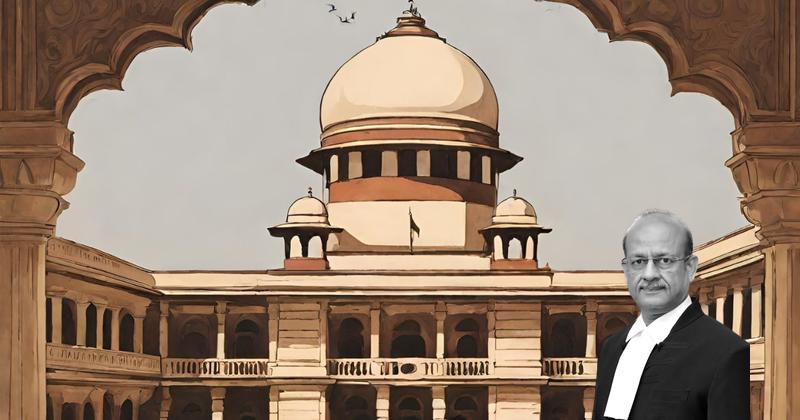Explore a deep dive into the legal intricacies of jurisdiction between court-martial and criminal court as analyzed by the court. This summary sheds light on the application of relevant legal provisions and the court’s interpretation in a complex legal scenario.
Facts
- An appeal was made by the State of Sikkim against the judgment of the High Court of Sikkim.
- The State was represented by Mr. Vivek Kohli, the Advocate General.
- The High Court, under its revisional jurisdiction, upheld the order of the Sessions Judge directing the Chief Judicial Magistrate to deliver the accused for trial by a court-martial.
- The accused, Lance Naik Jasbir Singh, was witnessed opening fire on a rifleman by the informant.
- A charge-sheet was submitted against the accused for offenses under Sections 302 and 308 of the IPC.
- The Commanding Officer provided documents requested by the Investigating Officer related to the accused’s appointment and duty on the date of the incident.
- A contention was made that the accused could only be tried by a General Court-Martial under the Army Act 1950.
- A First Information Report was lodged by Lance Naik Rajesh Kumar, leading to the registration of FIR No. 409 of 2014 at the Sadar Police Station, Gangtok.
- The accused escaped from the informant during the investigation.
- A case was registered as Sessions Trial Case No. 03/2015 on 28 February 2015.
- The Commanding Officer exercised discretion under Section 125 of the Army Act and Rule 9 to communicate the decision for the trial to be conducted by the criminal court.
- The Sessions Judge’s order on 9 March 2017 reversed the proceedings to the final arguments stage.
- The limitation period under Section 122 of the Army Act for court-martial trials is three years from the date of the offence.
- Handing over the accused to civil authority is not sufficient proof of the option to trial in the criminal court.
- The High Court identified procedural violations under various sections and rules governing jurisdiction and trial procedures.
- Non-disclosure of relevant documents and uncertified copies led to rejection of certain arguments by the High Court.
- The Sessions Judge upheld the accused’s objection to the jurisdiction of the Sessions Court based on the nature of the offence.
- The GOC’s decision on 22 April 2019 to move the proceedings to a criminal court was challenged but upheld.
- The Chief Judicial Magistrate directed the accused to be handed over to the military authority based on court orders.
- The respondent, who retired in March 2020, remains in military custody post his retirement.
Also Read: Electoral Malpractices in Mayor Election
Arguments
- The criminal courts and court-martial have concurrent jurisdiction to try a case under Section 125 of the Army Act.
- The Army did not want to try the accused by court-martial as seen in the decision to handover custody to the police.
- The decision in Joginder Singh v. State of Himachal Pradesh supports the stance that the Army authority opted for the accused to be tried by the police.
- There are three categories of offences under the Army Act determining the trial process: offences exclusively triable by court-martial, offences triable by a criminal court, and offences where both court-martial and criminal court jurisdiction can be exercised.
- In this case, the Army authorities chose to hand over the accused for trial by a criminal court rather than convening a court-martial.
- Trial is possible only before the court-martial according to Sections 69 and 70 of the Army Act
- Sections 125 and 126 operate in different spheres – Section 125 relates to the discretion of the Army authorities in choosing the court for proceedings, while Section 126 deals with the power of the criminal court to require delivery of an offender
Also Read: Balancing Power and Transparency: Electoral Bonds Struck Down, Disclosure Mandated
Analysis
- The discretion to decide whether the accused is to be tried by court-martial lies with the Commanding Officer under Section 125.
- The Commanding Officer may choose to try the accused through court-martial, decide against it, or not overtly exercise discretion, in which case, his conduct determines the exercise of discretion.
- If the designated officer does not initiate court-martial proceedings, the criminal court can exercise jurisdiction as per the law.
- In the present case, the Commanding Officer recommended the trial to be conducted by the criminal court, indicating the exercise of discretion.
- Section 69 of the Army Act does not automatically exclude the jurisdiction of the criminal court.
- The discretion to choose between a court-martial and a criminal court lies with the designated officer under Section 125.
- The designated officer is empowered to decide where the proceedings should be instituted and may detain the accused in military custody if a court-martial is chosen.
- Different punishments are assigned under Section 69 for various offense types.
- The purpose of Rules 3 and 4 is to allow the designated officer to decide between court-martial or the ordinary criminal court based on a written notice from the Magistrate.
- Non-compliance with mandatory statutory requirements may render actions null and void, as per legal principles.
- The provisions of Chapter VI of the Army Act indicate that offences created by the Act are exclusively triable by a court-martial.
- Where a ‘civil offence’ is also an offence under the Army Act or deemed to be an offence under the Act, both the ordinary criminal court and court-martial would have jurisdiction.
- The rules framed under Section 475 of the CrPC provide for the issuance of a notice by the Magistrate to the competent officer to decide on trial by court-martial or criminal court.
- Section 125 provides the designated officer with discretion to decide trial method after the charge sheet is filed.
- The Central Government’s decision in such conflicts is final.
- Section 70 of the Army Act outlines exceptions where court-martial would not exercise jurisdiction.
- The judgment emphasizes that the Sessions Judge had jurisdiction to try the offender, making Section 461(l) of the CrPC inapplicable.
- The decision of the Central Government is final in resolving conflicts between court-martial and criminal court jurisdictions.
- The case involves a situation where both court-martial and the ordinary criminal court had concurrent jurisdiction, as the accused was in active service at the time of the alleged offence.
- The judgement distinguishes the case of Ram Sarup regarding the challenge to Section 125 of the Army Act.
- The analysis cites examples and legal provisions to explain the jurisdictional aspects between court-martial and ordinary criminal court under the Army Act.
- The inconsistency in following Rules 3, 4, and 5 of the 1978 Rules in the present case does not render the trial null and void, due to the clear acceptance of jurisdiction by the army authorities.
- Section 69 of the Army Act is subject to Section 70, governing instances where court-martial jurisdiction does not apply.
- Sections 125 and 126 of the Army Act provide provisions to avoid conflict of jurisdiction between criminal courts and court-martials.
- Rule 3 applies when the police complete the investigation and bring the accused before the Magistrate after the charge-sheet submission.
- The case of Som Datt Datta dealt with an offender tried by a court-martial.
- The discretion on whether the accused should be tried by a criminal court or court-martial can only be exercised after police investigation completion and charge-sheet submission.
- In Extra-Judicial Execution Victim Families Association and Another v. Union of India , the issue of trying members of the Armed Forces under Army Act through court-martial or CrPC was raised.
- The stage at which discretion must be exercised under Section 125 was a crucial question.
- The Court in Joginder Singh v. State of Himachal Pradesh discussed the jurisdiction of ordinary criminal courts and court-martials in cases of overlapping offences.
- The decision in Som Datt Datta v. Union of India involved a challenge to court-martial proceedings due to lack of notice to the Magistrate.
- Section 549(1) of the Code of Criminal Procedure 1898 and Section 475 of the CrPC were to be interpreted in light of Section 125 of the Army Act to avoid conflict between courts.
- The judgment in SK Jha v. State of Kerala dealt with the trial of naval officers for various IPC offences and the transfer of an accused subject to the Army Act to civil authorities.
- The Sessions Judge was competent and there was no error in the assumption or exercise of jurisdiction.
- The High Court erred in affirming the decision of the Sessions Judge that the court-martial alone would have jurisdiction.
- The respondent’s submission was not accepted by the court.
Also Read: Recall of Resolution Plan Approval: Legal Analysis
Decision
- Pending applications of 53 shall stand dismissed.
- The appeal is allowed with specified terms.
- The trial will proceed and conclude as per the law.
- The decision of the High Court obligates the Army Authorities to hold a court-martial despite a submission to the Court of Sessions.
- The appeal is allowed, and the judgment of the Single Judge of the High Court is set aside.
- The respondent-accused will be transferred from military custody to civil custody for trial.
- The trial will continue from the point where the Sessions Judge decided on the absence of jurisdiction.
Case Title: THE STATE OF SIKKIM Vs. JASBIR SINGH (2022 INSC 128)
Case Number: Crl.A. No.-000085-000085 / 2022



